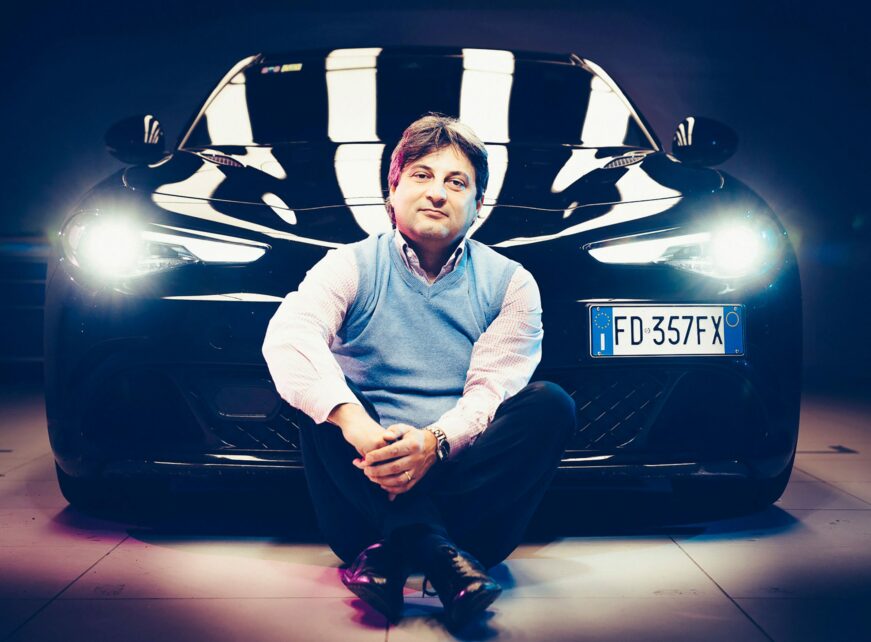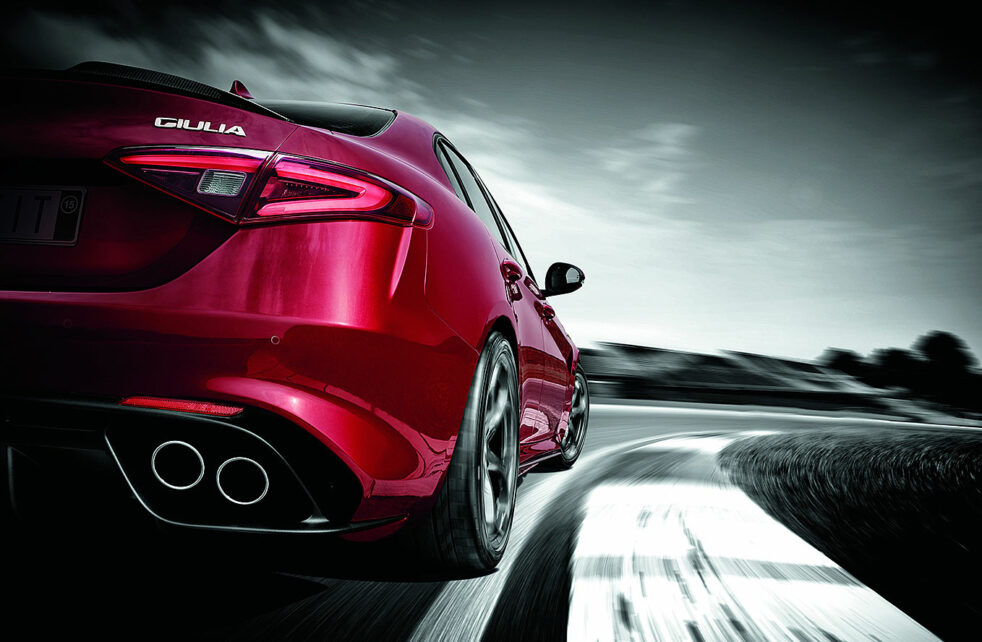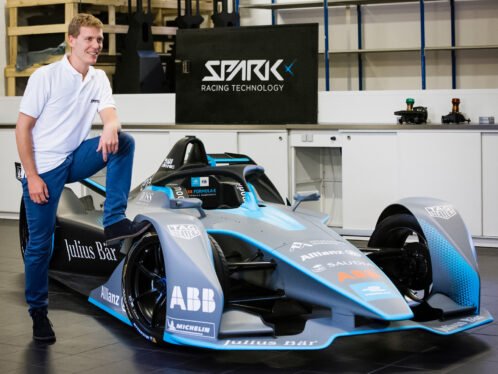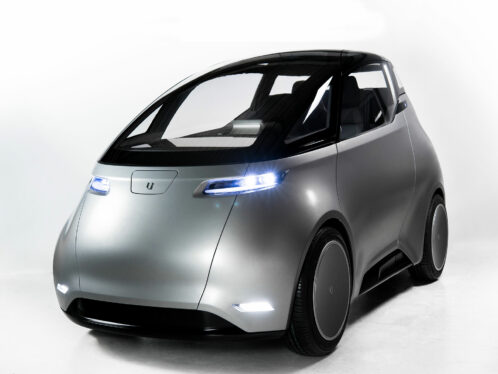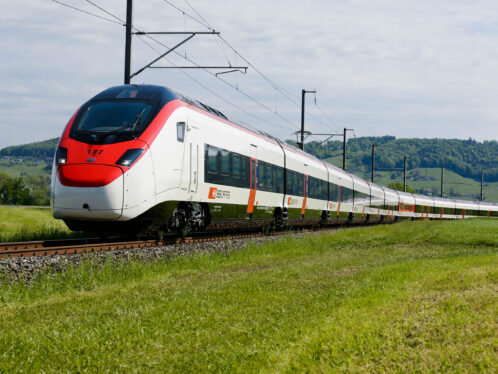
When Don Quixote rode a biscione
Don Quixote challenged windmills. Alfa Romeo engineers challenged the norms prevailing in the premium car category. The result? The new Alfa Romeo Giulia, introduced in June 2015.
The automaker’s commercial fortunes have been twisting, biscione-like, over the years, but its reputation as a maker of pulse-pounding sportive cars has never faded. So when Sergio Marchionne, CEO of what is now the FCA Group, which owns Alfa Romeo, decided in 2013 to relaunch the brand, he had more than a century’s worth of DNA to tap.
Marchionne also had an ambitious goal: to bring Alfa Romeo’s sales from 74,000 cars in 2013 to 400,000 cars by 2018. The target and the time allotted to achieve it made this “a Don Quixote quest”, notes Valerio Bisogno of Alfa Romeo.
By starting with the top-end performance, we produced better performance down the line, regardless of horsepower.
Valerio Bisogno
Alfa Romeo
Bisogno is chief engineer for the Giulia, the first model introduced by the company in this new programme.
The initiative was code-named Project Giorgio to keep its existence secret. The engineers hired for it were sequestered from the rest of the Fiat group in a skunkworks set-up, which was so effective that no information leaked out prior to the introduction of the Giulia on 24 June 2015.
“Mission Impossible” accomplished
When Alfa Romeo turned to SKF in 2013 with an ambitious project code-named Giorgio, it seemed almost like “Mission Impossible”. The challenge – if SKF was to accept it – was to develop specific bearings for a new automobile, being designed from scratch. The wheel bearings had to be lightweight, given the Alfa’s sporty reputation, but with sufficient rigidity to minimize vibrations and noise. “Plus, we had to do this with an extremely reduced development time,” recalls Andrea Reisoli-Matthieu, SKF’s global account manager for the FCA Group.
SKF, given its longstanding relationship with Fiat and Ferrari, signed the contract in November 2014. The Alfa Romeo Giulia made its press debut on 24 June 2015. That meant very short development time and a double-edged challenge:
The technical demands on the bearing units with different designs – bearings for the front and rear wheels and a special rear wheel bearing design for the high-performance 375 kilowatt Quadrifoglio model.
The production hurdle: to be able to produce as many as 1.6 million bearings per year for FCA.
SKF used the know-how it had acquired with Ferrari as a starting point for the technical specifications for the new wheel bearings. A tougher obstacle was to create from scratch a production line in record time that would fulfil Alfa Romeo’s delivery requirements. In the end, the “Mission Impossible” was accomplished. “We delivered our bearings on time and on specifications,” says Reisoli-Matthieu.
Don Quixote challenged windmills; the engineers of Project Giorgio challenged all the norms prevailing in the premium car category. “To obtain the performance we wanted, we had to rethink the car inside and out,” Bisogno recalls. The team started with a blank sheet of paper, jotting down what they thought Alfa Romeo was in 2013 and what it should become. An early objective was to beat the existing speed record at the German Nürburgring race track, a proving ground for high-performance cars.
At the same time, the engineers knew that most potential buyers would not be Alfisti, the most passionate hard-core Alfa Romeo fans, but rather street motorists who wanted to drive in comfort.
Fuel efficiency was another concern. The engin-eers realized that they had to redesign the motor from scratch, and all motor options for the Alfa Romeo Giulia are new, starting with the top-of-the line longitudinal twin-turbocharged six-cylinder engine producing 375 kilowatts with rear-wheel drive. Fuel efficiency comes through cylinder deactivation (the ability to switch off three of the six cylinders when not needed – in city traffic, for example).
Other innovations include AlfaLink aluminium double wishbone front suspension, an active carbon front splitter, an integrated brake system, a carbon-fibre drive shaft, torque vectoring and a four-mode selector for driving called DNA. With DNA, a driver can adjust throttle response, shifting speeds and traction control to one of four driving experiences: efficiency, natural, dynamic and race. The latter neutralizes the car’s predictive control systems and is recommended only for expert drivers, preferably on a racetrack.
All these systems are integrated with complex algorithms developed in-house, Bisogno points out. He says there are more lines of code in the Alfa Romeo Giulia – 40 million than in a Boeing aircraft. The systems work together to anticipate what the driver intends to do and correct possible errors before they could occur. The driver perceives only a smooth, responsive automobile.
The creation of the Giulia turned auto development upside down. Instead of starting with a basic model and then adding features, the industry norm, the engineers on Project Giorgio started out with the Quadrifoglio, the top-of-the-line model of the Giulia. “By starting with the top-end performance, we produced better performance down the line, regardless of horsepower,” says Bisogno. “The overall impression of car handling, steering, brakes and comfort doesn’t change regardless of the size of the engine.”
The trade and the public have embraced the Giulia. As of the end of 2016 it had won 26 awards from major European trade magazines, seven in Germany alone. Bisogno and his team are especially proud of the fact that they did not glide along on the usual slogans of design, passion and the “made in Italy” credential – the obvious things Italian manufacturers cite.
They succeeded; the Giulia has best-in-class: 375 kilowatt, 0–100 km/h in 3.9 seconds and a record-setting 7:32 minutes around the Nürburgring.
“We believe our product is technically superior,” Giulia’s chief engineer insists, not at all quixotically.


